Group project curated by Elena Siemens
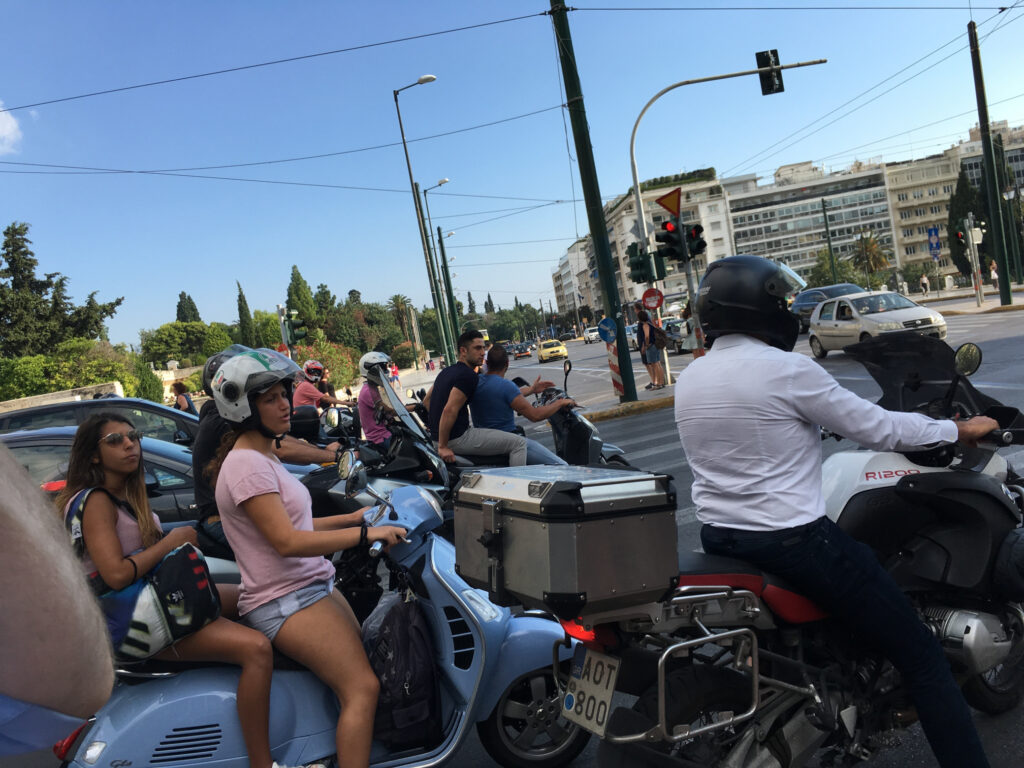
My first time in Athens, everything is new and exciting: streets names, store fronts, people on scooters waiting for the traffic lights to change. My photo foregrounds two female riders, neither of them appears to mind the wait. The photo’s punctum, Rolland Barthes writes, “is this element which rises from the scene, shoots out of it like an arrow, and pierces me” (Barthes). In the Athens picture, I find this piercing element in the furry fabric that covers the backrest of the girls’ scooter. Why this warm fabric in the 30-degree heat?
Traffic Lights Pop-Up Part 3 features entries from Toronto and Zimbabwe, and points in between. In Sam Quist’s collage, the punctum is a movie clapper that rules an imaginary intersection in LA. In Christian Basar’s image of Maputo, an element that “rises from the scene” is the red traffic light. “Driving in Mozambique,” Basar says, “is chaotic at times. Sometimes people will just go through red lights.” In this installment, opinions on traffic lights vary dramatically from frustration to a smile. As its predecessors (Parts 1 and 2), Part 3 combines student and guest entries, photos and text, as well as poetry and art.
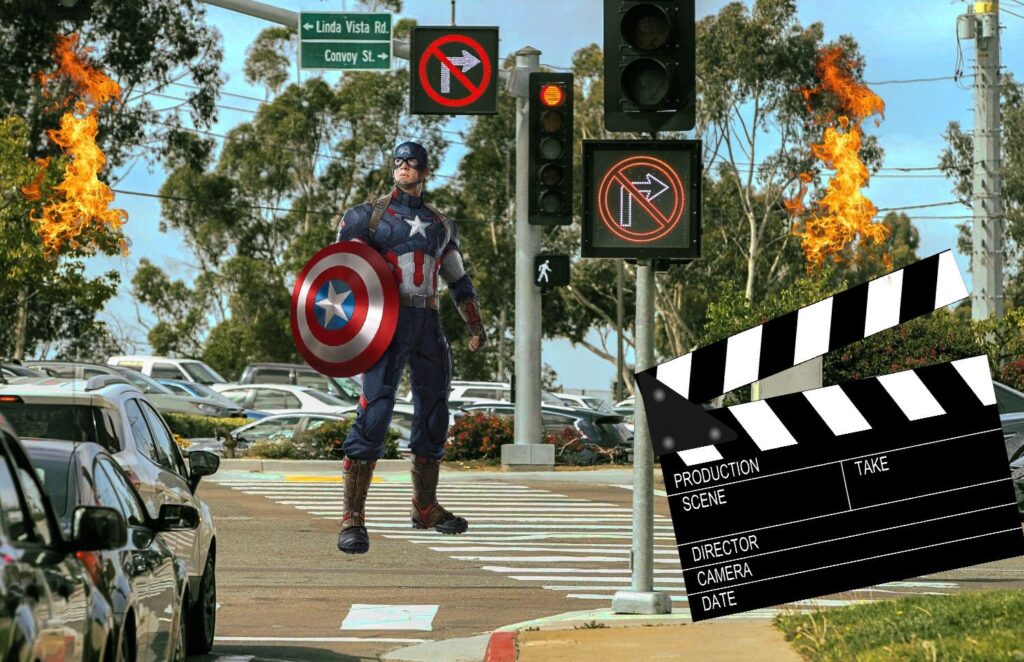
Samuel Quist: “Captain America is the focal point of the collage, and is absolutely enormous in size. This represents the dominance of the film industry in LA, and the dominance of Disney and Marvel in that industry. The Captain’s cinematic universe is so powerful that local traffic must stop at his presence. The film clapper indicates that this scene is being filmed, possibly for an upcoming movie, with fire in the trees representing the action and destruction present in the film.”
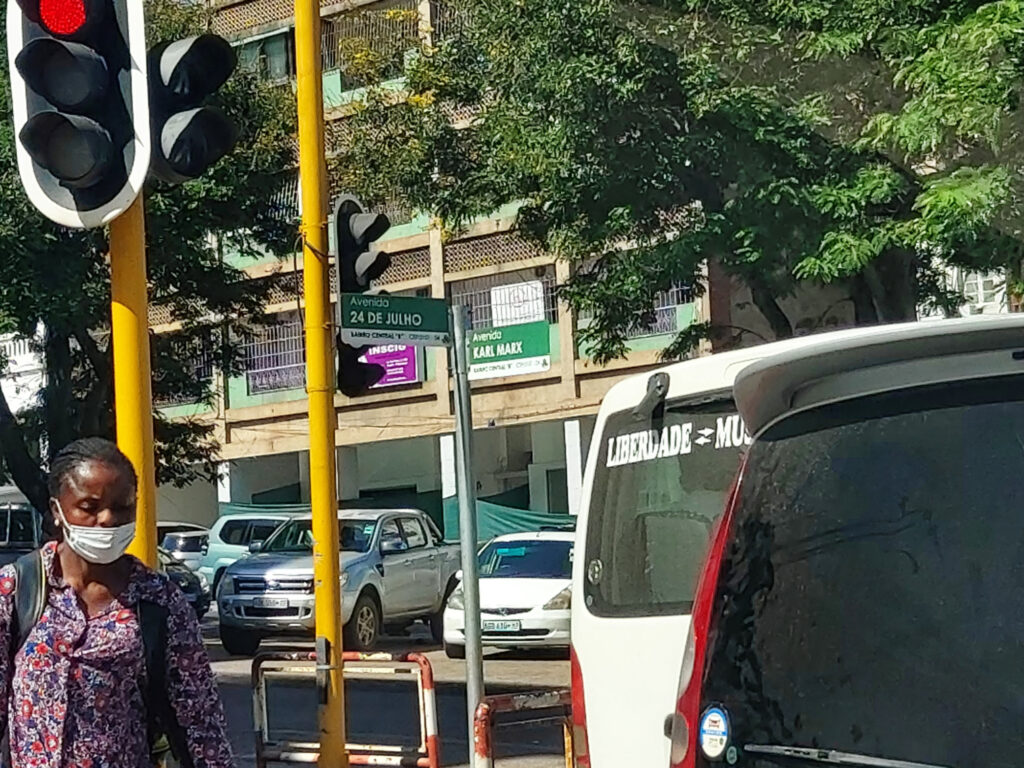
Christian Basar: “Driving in Mozambique is chaotic at times. Sometimes people will just go through red lights. At times I would stop at red lights and other drivers behind me would pressure me to just go through. And some intersections weren’t controlled well by traffic lights, so they often filled up with cars. At such places, traffic police often controlled traffic manually.”
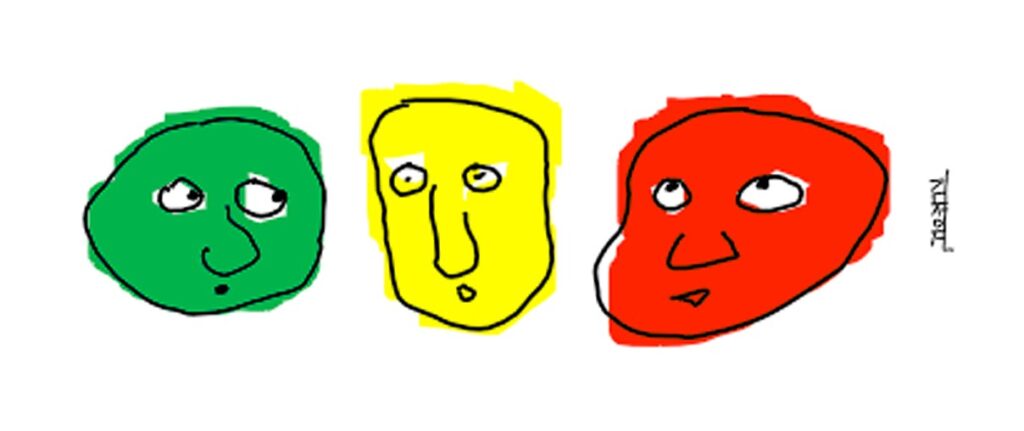
Jeongwon Gim: “Personified Traffic Lights [is] an illustration of each coloured bulb of traffic lights as representing a person’s face.”
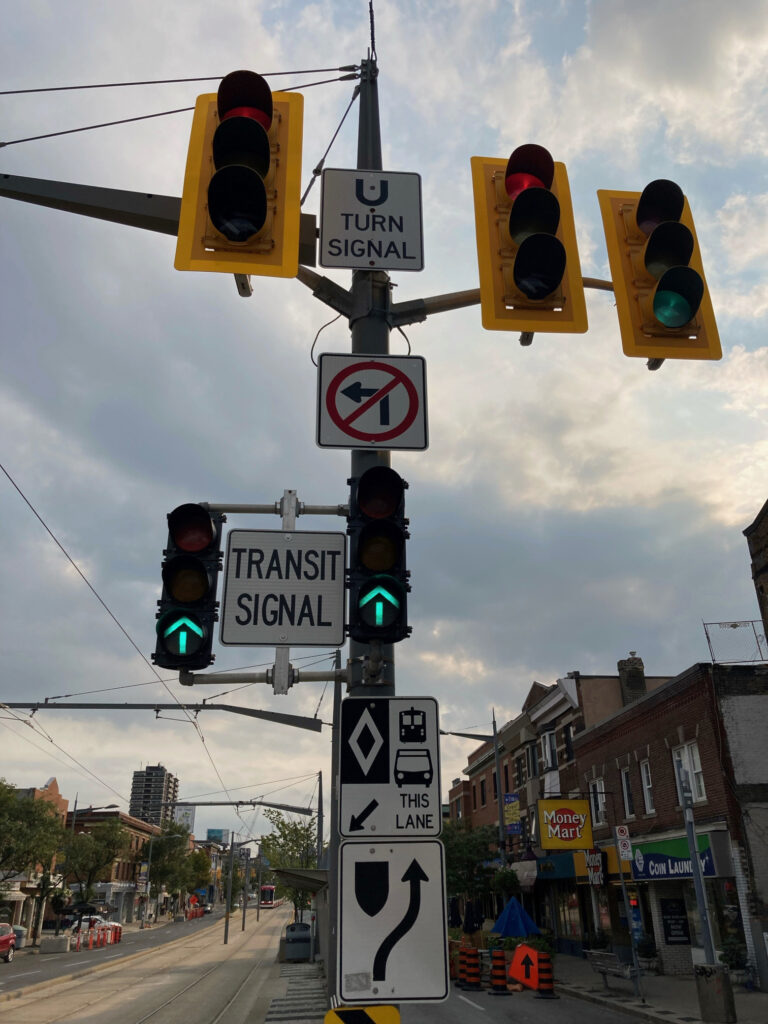
Francesca D’Angelo: “Traffic lights happen to be one of those everyday taken for granted ’things’, until, as Bill Brown, author of the essay on “Things”, reminds us, they break down. And it happens to be one of those things that when they go awry wreak havoc on our trajectories. So I always marvel at how these mundane contraptions, these signs, traffic lights, manage to navigate our motion, actually enable or disable action, without us paying them much heed, until their failure and we become so fully immersed, so fully aware, so passionately aware, in fact, that we yell, kick, beep, honk, contort and splay all kinds of maledictions their way. I am in awe at how they manage to keep us moving along.”
Stop, Go by Anton Iorga
Traffic lights
they ask us to comply
to havoc and madness
despite us,
We match their spite
With activism
and intersectional advocacy
from past to Light
We are Black & White
& in between
Sadness and might
From vivid dreams
Yet we have to fight
To get to the meaning
And mastery of Life
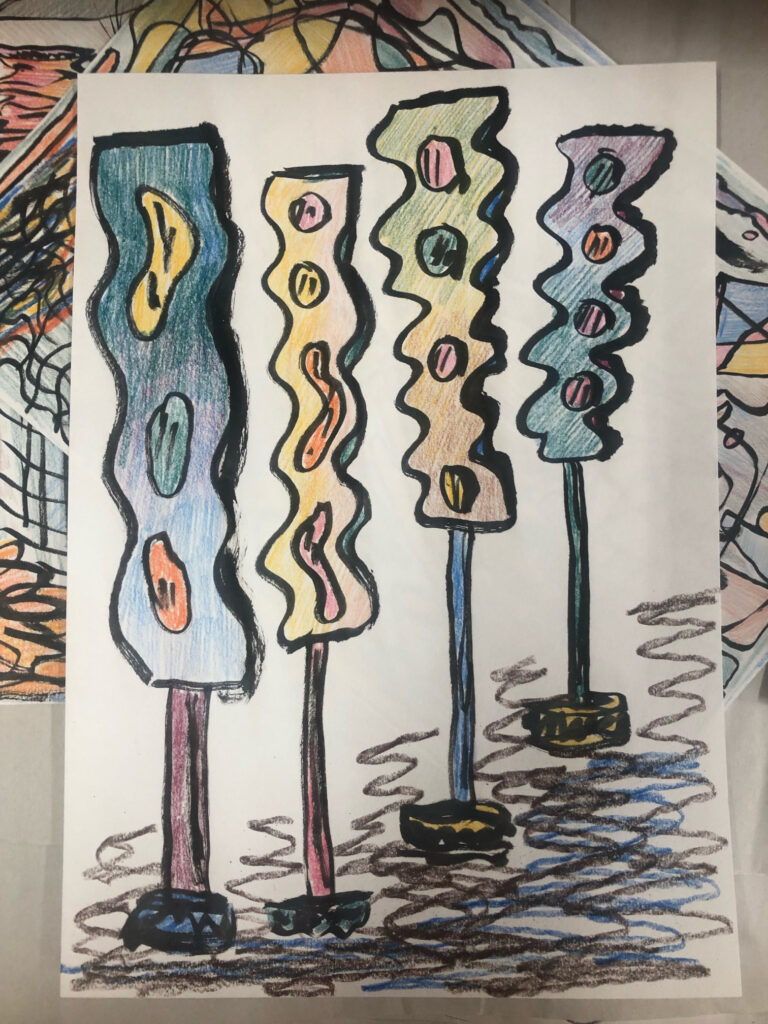
Street artist Brad Downey says that the “city is so serious and can be so depressing, it can get you down” (Cedar Lewisohn). He calls for more “light-hearted” interventions as in The Kiss, a cheeky ready-made with traffic poles. In his contribution, Thomas Whittle (Downey’s fellow UK artist) also turns things around, and upside down. His traffic lights are no longer rigid in either their shape or colour pallette. What do traffic lights represent? An instrument of control? An object of art? Could they be both?